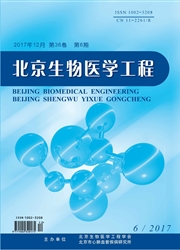

 中文摘要:
中文摘要:
通过对骨组织显微结构观察分析,指导人工骨支架内部微管道结构设计,结合CAD、反求工程和快速成形技术制造仿生结构生物活性人工骨支架。观察骨组织切片,获取骨组织微观结构数据,进行三维重构和辅助设计,应用快速成形技术制造相应的支架模具。在模具中填充磷酸钙骨水泥,烧结后得到仿生结构生物活性人工骨支架。光学显微镜和扫描电镜观察和测量支架微结构,X射线衍射分析磷酸钙骨水泥在热分解前后的主要成分,结果表明,所得支架与设计相符,热分解前的磷酸钙骨水泥主要成分为低结晶度的羟基磷灰石,而热分解之后为结晶度更高的羟基磷灰石。体外培养试验表明支架无细胞毒性,且黏附在支架上的细胞保持着良好的形态和功能发挥。
 英文摘要:
英文摘要:
Microstructure of bone tissue was observed and analyzed to guide the design of internal microchannel architectures for scaffold. CAD, reverse engineering and rapid prototyping techniques were combined to fabricate bioactive scaffold with biomimetic structure. Histologic sections of bone tissue were observed to obtain the microstructure of bone tissue. 3D reconstructions and designs were conducted. The corresponding mold was fabricated using stereolithography. Calcium phosphate cement (CPC) was cast into the mold and the bioactive scaffold with biomimetic structure was achieved after sintered. The scaffold represented the design, and its dimensions were remarkably consistent. X-ray powder diffraction (XRD) analysis showed that the main components of CPC were hydroxyapatite with low crystallinity before pyrolysis and with high crystallinity after pyrolysis. In vitro experiments revealed that scaffold was non-cytotoxic and supported cell adhesion, proliferation and viability.
 同期刊论文项目
同期刊论文项目
 同项目期刊论文
同项目期刊论文
 期刊信息
期刊信息
